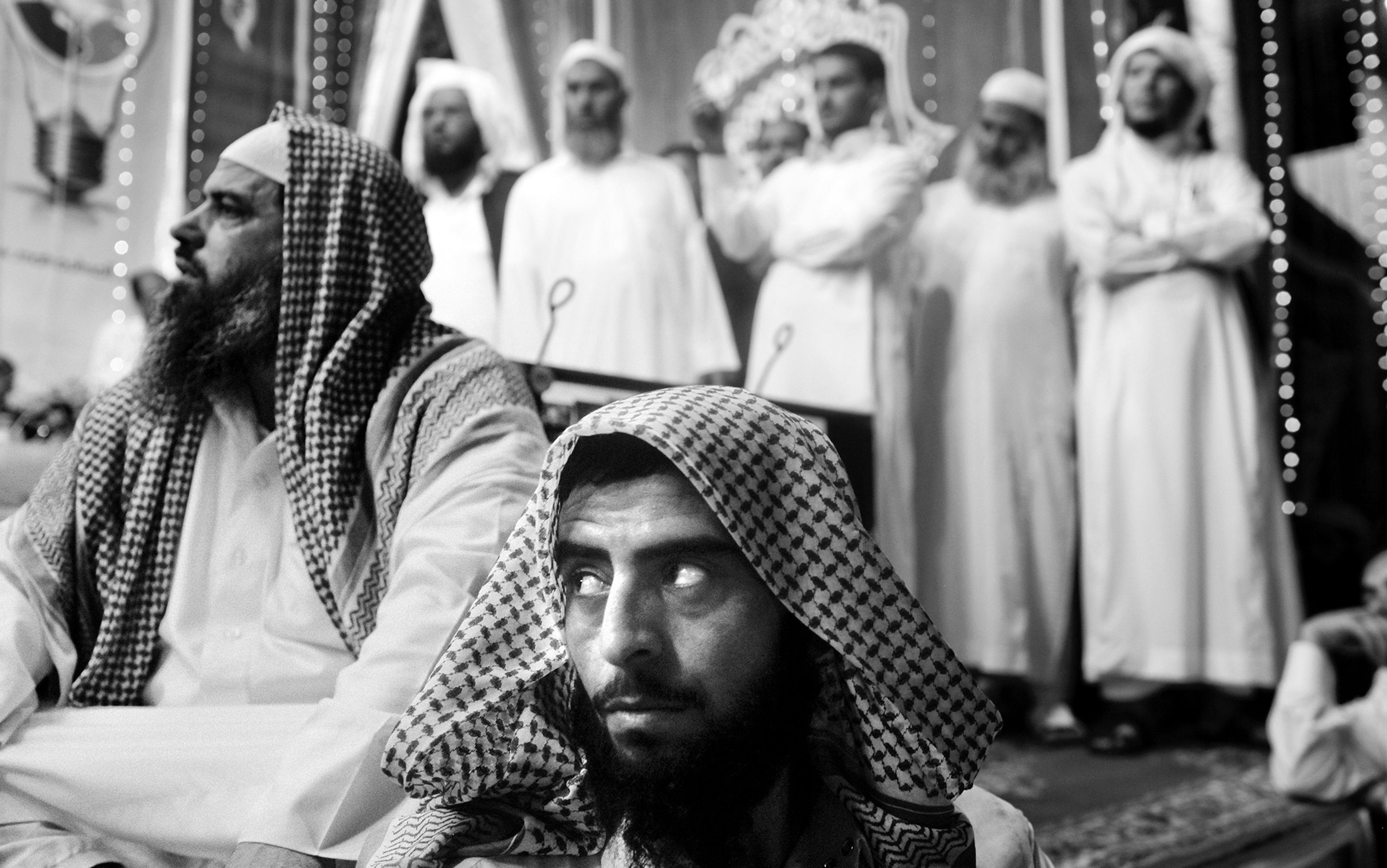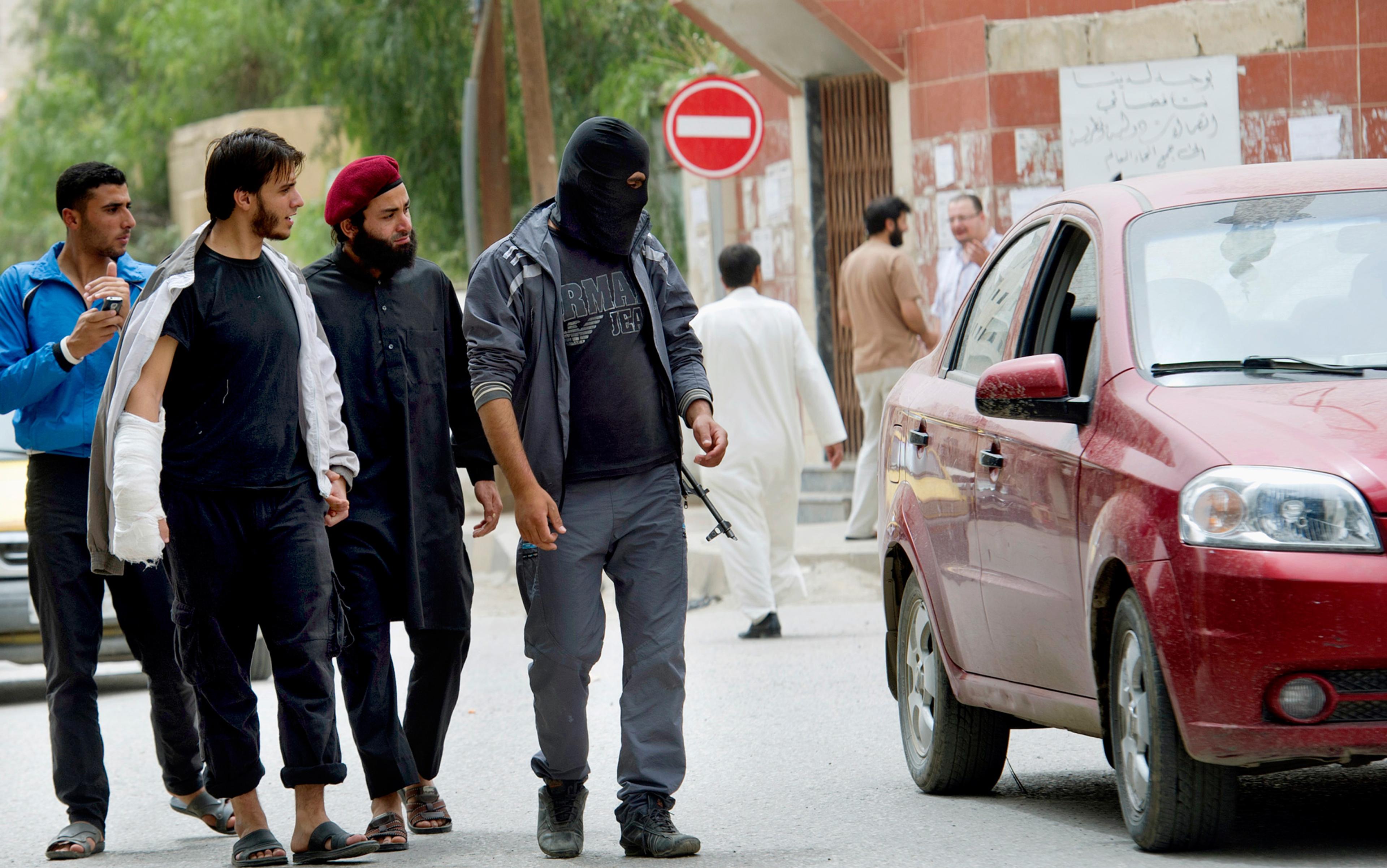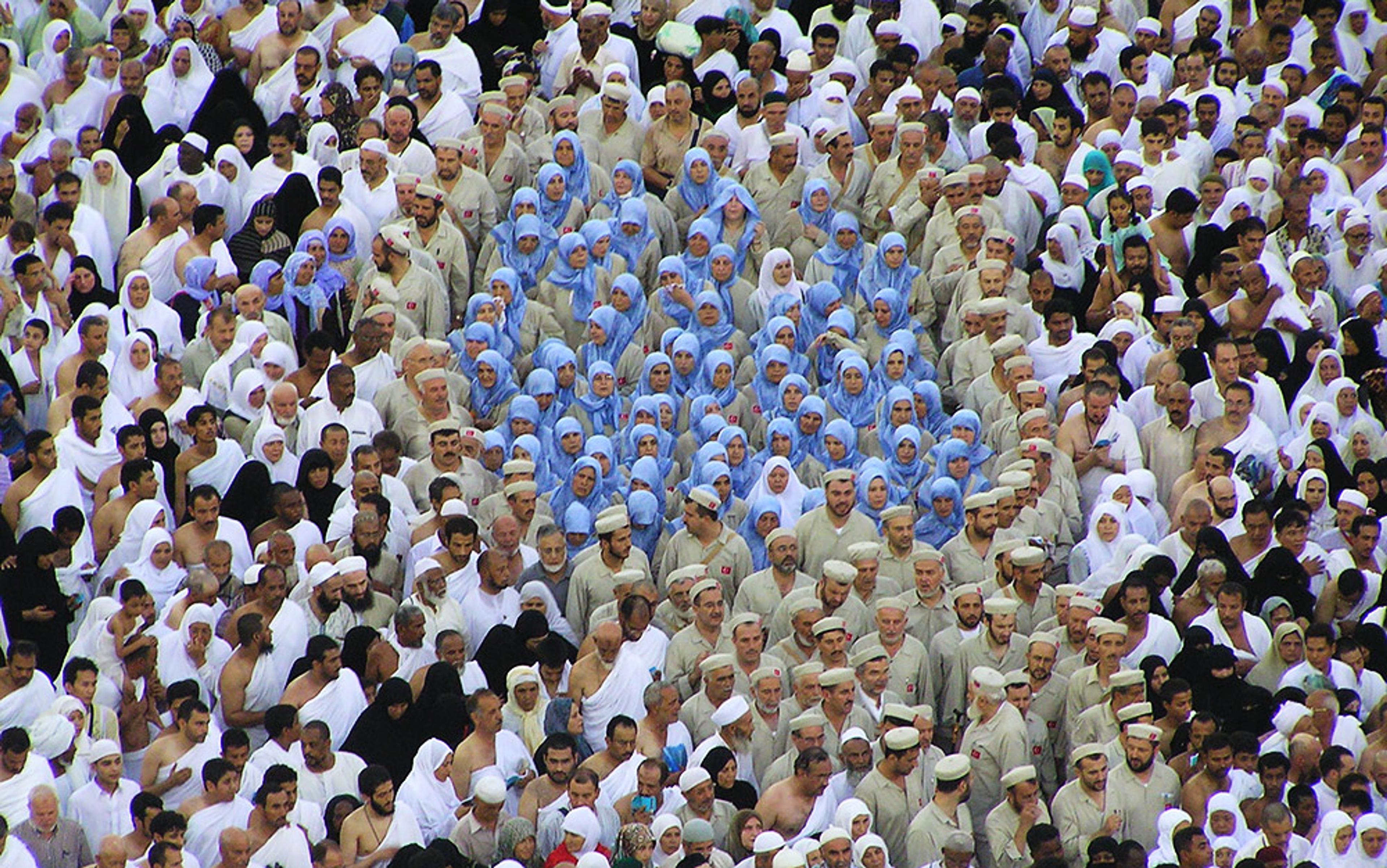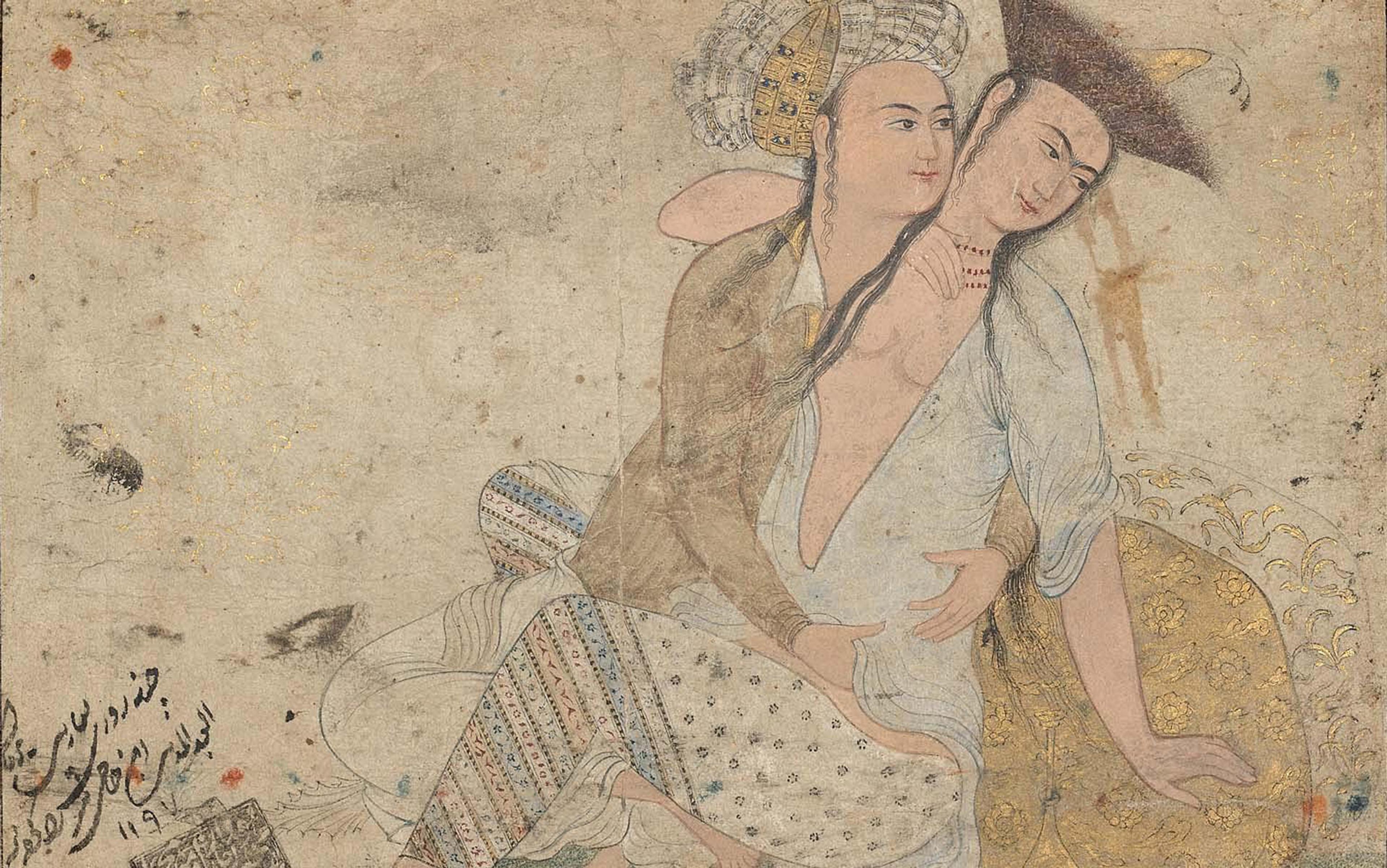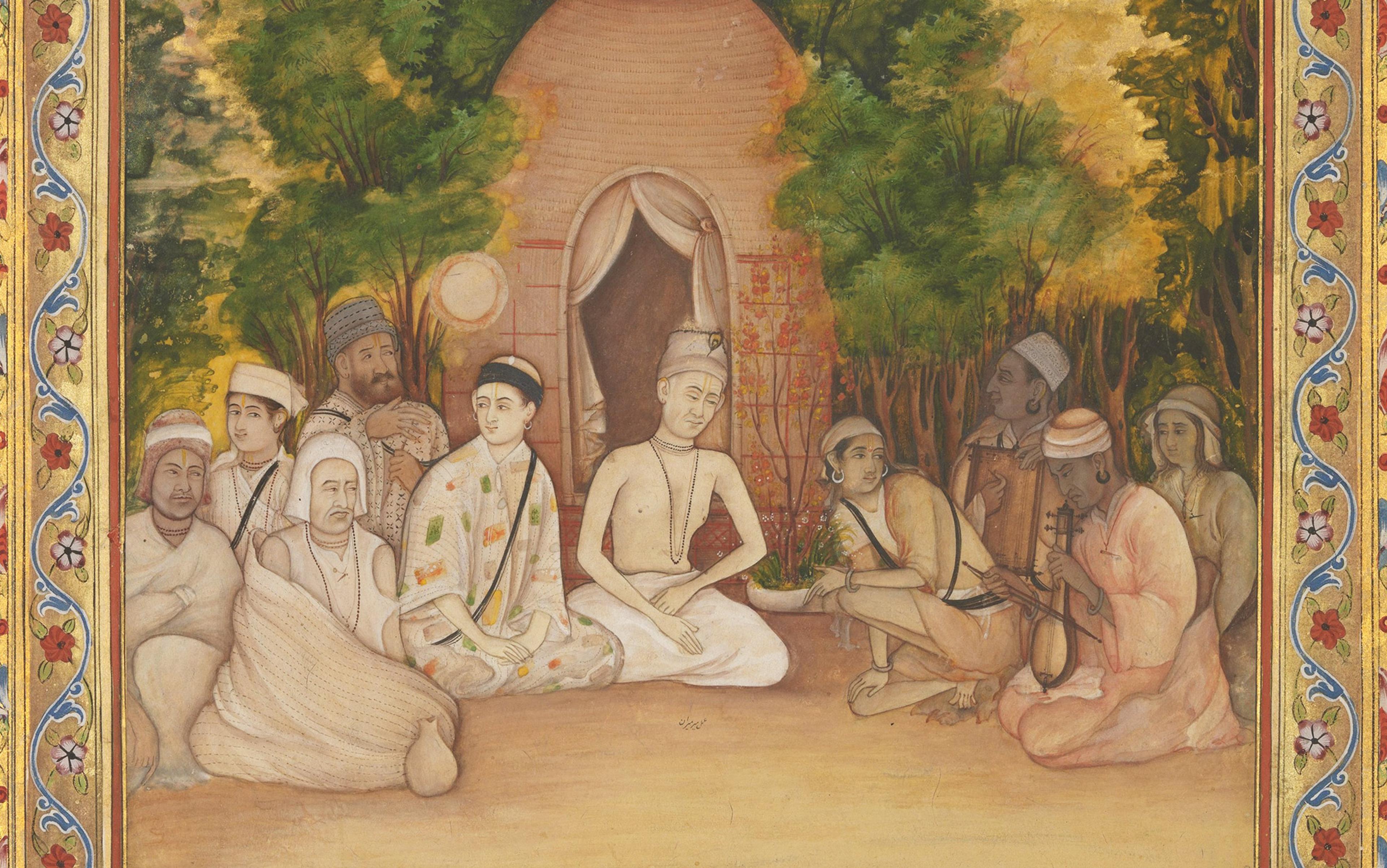There are tens of millions of Salafis today, male and female, and their ranks stretch from the Middle East and South Asia to western Europe and the United States. Members of this Sunni Islamic movement are bound by shared principles, including a literalist theological approach regarding God’s nature and a commitment to deriving all law from Islam’s holy text (the Quran) and the authoritative record of the Prophet Muhammad’s life (the Sunna). These shared principles manifest not merely in a comprehensive project of piety that defines these men and women’s lives, but also in a set of daily practices that visually distinguish Salafis not only from non-Muslims but also from fellow Muslims.
If one knows what to look for, one can identify a Salafi by sight. Salafi facial hair comprises a trimmed moustache and a beard that is a fist long, at minimum; Salafis dress in pants or robes that are shortened to the ankle; and Salafi social spaces are defined by separation of men and women. If one were to venture into a mosque, one could identify (some) Salafis by the distinctive practice of praying in shoes, which stands in contrast to the practice of the vast majority of Muslims, who pray barefoot (and have done so for centuries). Collectively, these practices enable Salafis to create a cultural boundary between themselves and other Muslims and non-Muslims with whom they disagree on core issues.
It is easy to dismiss bodily practices such as these as secondary or unimportant. But for Salafis, they are not merely powerful symbols of belonging but a key means of orienting themselves to God in daily life. Salafis, inspired by the theological vision of Ibn Taymiyya, a 13th-century scholar from Damascus in Syria, seek to live lives in which every action is oriented towards worship of God. The power of this vision derives in part from its challenge: to even aspire to live life in such a manner, one must be constantly on guard, ever vigilant not merely to influences from outside the Salafi community but also to one’s material and bodily desires. For some Salafis, this theological approach can also create practical problems when living under secular states. For example, does payment of taxes to a state that doesn’t rule by Islamic law – whether in the Middle East and South Asia or the West – constitute a rejection of God’s sovereignty over material wealth? Can men serve in the armed forces of a country that requires a particular dress code and no facial hair? And what should one do in the case that conscription necessitates service in the armed forces? These are but a few of the questions that Salafis face in seeking to live their theological commitments.
This description is likely not what you expected from an article on Salafism. When the term ‘Salafi’ is used, many in the US think of Osama bin Laden, the founder and late leader of al-Qaeda. And it is quite possible that many of those who think of Bin Laden when they hear this term also know a significant amount regarding his goals (global Jihad), his methods (attacks on civilians and military alike), his disdain for local Arab regimes (particularly Saudi Arabia) and even his death in May 2011 in a compound in Abbottabad, Pakistan. And, as not only al-Qaeda but also ISIS have challenged the international order over the past two decades, the common answer to explain this trajectory has been that these groups model themselves after the first three generations of the Muslim community, known as the ‘Pious Ancestors’ (al-Salaf al-Salih).
These associations are not wrong but they are incomplete. Bin Laden was certainly a prominent representative of Salafi-Jihadism, but Salafi-Jihadism is a minority within the broader Salafi movement. Similarly, it is correct that Salafis take the first three generations of the Muslim community as a model yet, in doing so, they are joined by billions of Muslims across the world of vastly different views. And while it would be accurate to note that Salafis pattern themselves after the Prophet Muhammad’s journey – first his preaching in Mecca and then a full-blown project fusing religion and politics in Medina – an aspiration to reproduce this model is not the same as reproducing it. Put differently, while Salafis take inspiration from the 7th century, they emerged in the 20th century.
Instead of assuming that Salafism is a reproduction of the 7th century and a violent one at that, we might begin in the late 19th and early 20th centuries. In the shadow of French and British colonial occupation, Muslims from Cairo to Calcutta debated a basic question: who in the Muslim community should have authority? For a millennium, the answer to that question lay with the traditional schools of Islamic jurisprudence, known as the madhhabs. Scholars within these schools – which were not brick-and-mortar buildings but rather intellectual and social networks that knit together scholars across vast geographic distances – had long served as crucial mediators. They not only bridged the gap between lay Muslims and divine revelation and the Prophetic model, but also between the ruler and ruled. In the face of unprecedented political, social and economic challenges introduced by colonialism, however, Muslim reformers challenged the centrality of madhhab scholars.
These reformers were otherwise a highly diverse group who had little in common except shared opposition to the madhhab system. They came from Iran (Jamal al-Din al-Afghani), Egypt (Muhammad ʿAbduh), Syria (Jamal al-Din al-Qasimi and Muhammad Rashid Rida), and even Crimea (Ismaʿil bey Gaspıralı). Some such as ʿAbduh, Gaspıralı and Al-Qasimi sought change through education, while others such as Al-Afghani and Rida turned to Islam as a powerful source of solidarity to mobilise Muslims against colonial occupation. All, however, embraced the power of the written word to speak to Muslim audiences within and beyond their country of origin and, in doing so, modelled an understanding of a global Islamic community that depended on scholars and laymen alike. All were also concerned with an interlocking set of questions: what did it mean to preserve the Islamic tradition in the shadow of modernity? How could Muslims compete with Europe’s intellectual, political and economic might that manifested itself in colonial rule over Muslim-majority lands? Could the Ottoman Caliphate, which had stood for 500 years, be saved and, in doing so, offer a counterweight to colonial interference? To answer these questions, all proposed returning to Islam’s two ‘pure’ sources: the Quran and the Sunna.
The anti-madhhab reformers of the turn of the 20th century were hardly the first Muslim thinkers to reckon with the perceived drifting of Muslims from their foundational model of 7th-century Medina. Most notably, Muhammad Ibn ʿAbd al-Wahhab and Muhammad al-Shawkani, two leading reformers of 18th- and 19th-century Arabia, sought to return Muslims to their two core sources. But Ibn ʿAbd al-Wahhab and Al-Shawkani undertook reform without need to consider the challenge of European colonialism. Instead, they placed themselves within a longer history of revival and reform. These two reformers, however, modelled a powerful rejection of the status quo through religious purity from which Salafis would draw inspiration.
Salafis believe that their theological approach is the only valid way to worship God
Reformers from the turn of the 20th century, such as ʿAbduh and Rida, were leading religious authorities of their day, but they were not Salafis. They were united by an objection to the centuries-old system of Islamic law by which scholars needed to claim affiliation with a given madhhab and follow the prior authoritative rulings of that school. According to these reformers, the problem with the madhhab system was not simply that it was intellectually stagnant but that it was unsuited to handle the political, economic and cultural challenge faced by Muslims at this time. Their rejection of the madhhab system’s intellectual methods was also a political manoeuvre: Islamic reformists such as ʿAbduh, Rida and others sought to undermine their competitors’ base of political and social influence so that they could take their place.
In the 1920s and ’30s, Salafism emerged as part of the Islamic reformist camp. As they did so, Salafis brought together two previously independent positions: a literalist approach to God’s nature and attributes preserved in the Hanbali school, one of the four Sunni schools of law; and the rejection of the madhhabs’ authoritative positions in favour of direct recourse to the Quran and the Sunna. While theology might appear to be an unlikely source of distinction for a world-making project, Salafis believe that their theological approach is the only valid way to worship God.
The Salafi theological and legal position was not merely a view of theological or legal truth but also a claim to authority and authenticity. In the shadow of the radical changes of the 19th and 20th centuries – a period during which Muslims had lost control over their lands, in which the Ottoman Caliphate had fallen, and in which European colonial penetration had reshaped the political and economic backbone of the Middle East and South Asia – they argued that Muslims had lost their connection to Islam’s founding model. While such an accusation highlighted the rise of secular nationalism in Muslim-majority lands, it also applied to other pious Muslims who also prized Islam’s golden period, such as the premier Islamist movement of the time, the Muslim Brotherhood. In short, the Salafi claim was (and is) that their commitment to modelling themselves after the early Muslim community of 7th-century Arabia makes them the most authentic and thus legitimate claimants to Islamic leadership. Just as importantly, the repeated claim that Salafis were subject to God’s authority only in countries whose leaders and populations were overwhelmingly Muslim was a clear rebuke of the authority of secular nationalist states that had arisen following the end of colonial rule.
It is easy to think of Salafism as a throwback to the 7th century. And indeed, this is a core aspect of Salafism’s appeal: a return to the basics, pure and uncorrupted. But aspiring to return to Islam’s founding moment is very different from actually doing so. And, as Salafis sought to replicate this ideal model, they were deeply shaped by challenges of European rule and Western cultural influence, on the one hand, and the competing ambitions of fellow Muslims to chart a new direction, on the other. As Salafism emerged in the 1930s, paths to political power were blocked and the battle was to be found in society, with secular-nationalists and Islamists competing to offer distinct visions of the past and future alike. These bodily practices were important because they were a key site at which Muslim men and women laid claim to politics in daily life.
In my recent book, In the Shade of the Sunna: Salafi Piety in the 20th-Century Middle East (2022), I charted the history of Salafi efforts to reshape society with a particular focus on Egypt. Between roughly 1940 and 1950, Egyptian Salafis came to focus on a largely forgotten practice: praying in shoes. While Muslims had once prayed in shoes – and the record of the Sunna suggests that the Prophet Muhammad and His Companions did so – this practice had declined with Islam’s emergence as an urban civilisation (and the establishment of ornate mosques with plush carpets). Here, for Salafis, was an opportunity: a practice with clear precedent in Islam’s core sources that would distinguish Salafis from other Muslims in mosques. The fall of praying in shoes, however, was as rapid as its rise. In the 1950s, the costs of religious distinctiveness grew under the secular authoritarianism of Egypt’s president Gamal Abdel Nasser and the latter’s crackdown on the Salafis’ Islamist competitor, the Muslim Brotherhood. Instead of insisting dogmatically on this project irrespective of the costs, Salafis quickly marginalised it and did not return to discussing this style of prayer for another four decades.
The emergence of Salafi facial hair in the 1980s was no more straightforward. Muslim men had long worn substantial beards as statements of religious piety and masculinity alike. What Salafis needed, then, was a model of facial hair that could distinguish them from other Muslims and make a plausible claim to be derived from the Quran and the Sunna. The eventual result could certainly cite these sources, particularly the Prophet Muhammad’s command to Muslim men to grow a beard and trim the moustache. Just as importantly, Salafis needed a practice that would differentiate them from competing Islamic institutions and movements – many of whom wore beards – as well as from their secular-nationalist competitors who paired a shaved face with a moustache.
Suddenly, flaunting was not a prohibition against immodest female conduct but a call to gender segregation
This project pivoted on a seemingly secondary source: a record of the actions of the Prophet Muhammad’s companion, ʿAbd Allah ibn ʿUmar, the son of the second Caliph, ʿUmar ibn al-Khattab. What made the Salafi choice to cite Ibn Umar’s trimming his beard to a minimum length of a fist so striking, however, was that this practice was performed in a specific context: engagement in the Hajj or ʿUmra pilgrimages to Mecca. And, just as strikingly, the Muslim Brotherhood had beaten the Salafis to the punch on this hadith report: in the early 1940s, a leading figure in the Muslim Brotherhood, Sayyid Sabiq, had cited the Ibn Umar report to justify the closely trimmed beard sported by the organisation’s founder, Hassan al-Banna. Put differently, this was a case in which the same hadith report was cited to support radically different positions. Just as importantly, a core aspect of Salafism’s appeal is that the Quran and the Sunna are essentially self-explanatory and that Salafis can avoid being corrupted by un-Islamic influences through exclusive reliance on these sources. The fact that the history of the emergence of distinctly Salafi facial hair stretched across four decades suggests that this model was far from self-explanatory.
At other times, the practice in question was decidedly novel. While Salafis cited the Islamic society of 7th-century Medina as a model, they could not point to any proof of texts from the Quran or the Sunna that prohibited gender mixing or required gender segregation. Previously, when it came to the question of gender relations, scholars of Islamic law had been primarily concerned with preventing extramarital sex. Indeed, to the extent that gender segregation existed in Islamic history, it was difficult to point to examples beyond the mosque, where men and women had long prayed in separate sections. Thus, to make the case, Salafis in the 1970s had to discover a new interpretation for an old source, specifically the Quranic prohibition against women acting in a manner designed to draw sexual attention (known as flaunting themselves, or tabarruj).
The prohibition against flaunting was clear and derived from the 33rd verse of the 33rd chapter of the Quran, which commanded women, in part, ‘do not flaunt yourselves’ (wa la tabarrajna). Yet, to justify gender segregation, a leading Saudi Salafi scholar, ʿAbd al-ʿAziz ibn Baz (Bin Baz for short) argued that the prohibition against women flaunting was actually a prohibition against men and women mixing. Suddenly, flaunting was not a prohibition against immodest female conduct but rather a thorough call to gender segregation. Here, too, political competition beckoned: at this time, the Muslim Brotherhood, along with its allies in the Islamic student movement, had begun to offer gender-segregated seating on selected public buses and had lobbied for gender segregation in several Egyptian universities. In response to their competitors’ attempt to seize the mantle of public piety, Salafis argued for a stricter and more expansive vision of gender relations.
It is easy to dismiss such bodily practices as ‘secondary’ matters but to do so is to miss how and why Salafis have emerged as powerful shapers of the societies in which they live. In the absence of political power, Salafis seek to shape the societies from which they have emerged and to do so by visibly modelling a commitment to the Prophet Muhammad’s example. Indeed, from Egypt to Syria to Yemen to Saudi Arabia to the Indian subcontinent to Europe and the US, one can find Salafis today adhering to these theological and legal approaches and bodily practices.
While Salafis can be found across the Middle East, South Asia, western Europe and the US, it is difficult to come by firm numbers of adherents. This is partially a function of how Salafis understand themselves: most reject the formation of political parties let alone transnational Jihadist groups and, unlike their Islamist counterparts, do not generally pledge allegiance to a particular organisation. Evidence of popular support for Salafism, however, can sometimes be found when Islamist or so-called Politico Salafis run for office. In Egypt, three Salafi groups, most prominently the Nour party, formed a bloc in the 2011-12 parliamentary elections, receiving more than 7.5 million votes, which represented 27.8 per cent of all votes. Generally, though, the primary community for Salafi men and women is local and informal: the scholars and teachers, male and female, with whom they study at local mosques. Yet, Salafism is not exclusively local: particular Salafi scholars, including deceased figures such as Bin Baz, Muhammad ibn Salih al-ʿUthaymin and Muhammad Nasir al-Din al-Albani, exercised influence on adherents across the world and continue to do so through their writings.
The contemporary Salafi scene is defined by three main contingents: Quietists, Islamists (aka Politicos) and Jihadis. The Quietists believe in obedience to the existing ruler and shy away from any public statements that could be interpreted as criticism. Instead, they offer advice (nasiha) to the ruler in private while pursuing grassroots reform of Muslims’ theological beliefs and ritual life, a focus that Al-Albani termed ‘Purification and Education’. To the extent that Quietist scholars comment on the status quo, they do so exclusively from a ‘religious’ perspective, avoiding any indictments of the political elite. The approach of Quietist scholars to politics, however, should not be understood as apolitical, but rather as a principled view of the dangers of political disorder drawn from the Sunni political tradition. Quietist Salafis avoid political competition and criticism not merely because it is unwise but also because it exaggerates the capacity of the state to rear pious Muslims while necessitating compromise with non-Salafi Muslims such as Islamists of the Muslim Brotherhood. It is only through uncompromising and principled reform of society that a properly Islamic state can arise in the future, and shortcuts to such a state will inevitably be plagued by corruption that renders this project defective.
For Salafi-Jihadis, living under a secular state and paying taxes to it renders a professing Muslim an infidel
By contrast, those Salafis who belong to the Islamist or Politico camp meld a commitment to Salafi theology, law and social practice with a vision of religiopolitical change through explicit critique of the status quo and electoral competition. While they are aware of the Quietist concern with compromise, they reject it in favour of the opportunities offered by state power and an urgent desire to change the status quo. This understanding of religiopolitical change, in turn, is a legacy of the Muslim Brotherhood, particularly the ideas of its founder, Al-Banna. In Saudi Arabia, such Salafis emerged in the 1960s and ’70s under what is known as the ‘Awakening’ (Sahwa) movement, though the Awakening’s political prospects have been severely limited by the restrictions of the Saudi political system. In Egypt, on the other hand, this camp arose in earnest post-2011 to take advantage of the opportunities offered by the transition after the president Hosni Mubarak. Most prominently, a leading Salafi preaching organisation, the Salafi Call (al-Daʿwa al-Salafiyya) in the coastal city of Alexandria formed the Nour political party, which contested parliamentary seats and captured the second largest bloc next to the Muslim Brotherhood’s Freedom and Justice Party. Nour thus retains Salafi views of theology and law, but shares the Muslim Brotherhood’s goal of establishing an Islamic state.
Finally, the Jihadi camp is most prominently represented by groups such as Al-Qaeda and ISIS. Such groups meld Salafi theological and legal positions with a set of political concepts inspired by Sayyid Qutb in the 20th century on the one hand, and the 18th-century Arabian reformer Ibn ʿAbd al-Wahhab on the other. In particular, this movement is distinguished by an emphasis on God’s sovereignty (hakimiyya) and declaring other Muslims to be infidels (takfir). Unlike the mainstream Sunni position that only acts of ‘flagrant disbelief’ (kufr bawwah), such as questioning God’s essential oneness, justify such excommunication, Salafi-Jihadis take the view that the mere act of living under the authority of a secular state and paying taxes to it renders a professing Muslim to be an infidel.
The Jihadi movement, however, was not always Salafi: in the 1980s, the vast majority of the fighters (mujahidin) in Afghanistan hailed from varied theological and legal approaches, a situation that would begin to change only in the early 1990s. Put differently, it is not only the case that the vast majority of Salafis are not Jihadis, but also a fact that the Jihadi movement emerges independently from the Salafi movement. By the early 1990s, however, the Jihadi movement had melded Salafism’s theological and legal approaches with an Islamist-inspired revolutionary political ideology and the purist inspiration of Ibn ʿAbd al-Wahhab.
Over the past two decades, Salafism has emerged and persisted as a key question of US foreign policy. First with Al-Qaeda’s attacks on the US on 11 September 2001 and then with ISIS’s announcement of a Caliphate in parts of Iraq and Syria in 2014, Salafi-Jihadis became the most visible representatives of this movement. That Salafi-Jihadis would stake this claim is unsurprising, as they benefit from Salafism’s claim to authenticity. Islamists within the Salafi camp, too, have emerged as prominent players in the post-2011 Middle East. Yet, as a matter of both past and present, these two segments of the Salafi movement are a distinct minority compared with the millions of Salafi men and women who adhere to Quietism and live not only in the Middle East and South Asia but also in the US and western Europe.
Given this history, how should we understand Salafism today? Opponents of Salafism of varied political persuasions often frame the movement as ‘backwards’ or as seeking a ‘return to the 7th century’. While the former description partakes in a longstanding tradition of purist (often non-Western) religious movements being assessed negatively along a teleological vision of progress, the latter reproduce the Salafi’s own claim to authenticity, albeit in pejorative fashion. Salafis cannot, any more than any other 20th- or 21st-century movement, return to the past. Instead, like any other movement, they are firmly rooted in the questions and concerns of the present, and engage selectively with past traditions in search of answers to these questions and concerns.
In this regard, Salafis are fundamentally similar to both religious and non-religious movements today. Like their theologically traditionalist and socially conservative counterparts in Judaism and Christianity, they seek to preserve an imagined past in which religion defined the goalposts of social life, in which their religious tradition was dominant, and in which the knowledge about the world that mattered most was that of the scholars. Salafis, however, also have a great deal in common with their secular nationalist competitors, who themselves appeal to a mythological national history, shorn of complication, ambiguity and division, and defined by unifying commitment to a given purpose.
In conclusion, to be a Salafi is to seek to live a model in the 21st century that first emerged in the 7th century. Yet, in doing so, Salafis are aspiring to recreate a golden past, an idealistic aspiration shared among religious and non-religious movements alike. Salafi claims to fundamental difference have persisted as long as they have because the movements’ proponents and opponents share a basic ahistorical view: that Salafism replicates the 7th century. Yet it is only by acknowledging the impossibility of such a claim that we can begin to have a serious public conversation about Salafism and public life in both East and West today.
